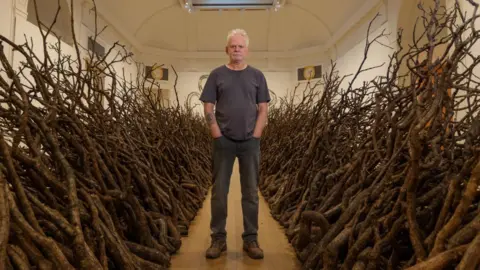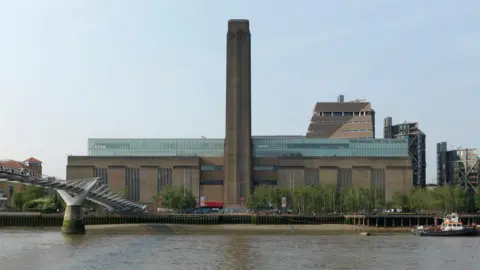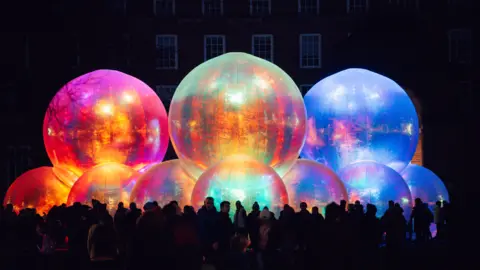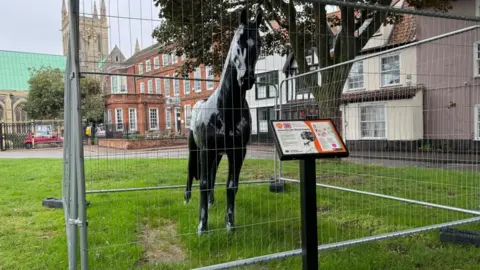Zambia's Copperbelt: Toxic Legacy & Mining's Dark Side
Zambia's Black Mountains: A Toxic Legacy, a Powerful Art
**Did you know that mountains of toxic mining waste are fueling a desperate, dangerous gold rush in Zambia?** This isn't just an environmental disaster; it's a human story painted in vibrant hues of hope and despair. Discover the breathtaking art of Stary Mwaba, a Zambian artist who captures the raw reality of life in the shadow of these "black mountains."
 The "Mu Danger" Generation: A Fight for Survival
Imagine a landscape scarred by colossal heaps of black, toxic mining waste – Zambia's infamous "black mountains." For artist Stary Mwaba, these mountains aren't just a grim backdrop; they're a deeply personal canvas. Growing up, he recalls sneaking into the "mu danger" (danger zone) with friends, searching for wild fruits amidst the toxic rubble. Today, a new generation risks their lives in these same treacherous mountains.
The "Mu Danger" Generation: A Fight for Survival
Imagine a landscape scarred by colossal heaps of black, toxic mining waste – Zambia's infamous "black mountains." For artist Stary Mwaba, these mountains aren't just a grim backdrop; they're a deeply personal canvas. Growing up, he recalls sneaking into the "mu danger" (danger zone) with friends, searching for wild fruits amidst the toxic rubble. Today, a new generation risks their lives in these same treacherous mountains.
 Young men, facing staggering 45% youth unemployment, risk life and limb scavenging for scraps of copper ore. They dig perilous tunnels, selling their finds to Chinese buyers – a dangerous, often illegal, but sometimes lucrative enterprise. This high-stakes game of survival fuels Mwaba's powerful art, showcased at the Lusaka National Museum. Want to understand their struggle? Read on.
Newspapers, Perforations, and Portraits of Resilience
Young men, facing staggering 45% youth unemployment, risk life and limb scavenging for scraps of copper ore. They dig perilous tunnels, selling their finds to Chinese buyers – a dangerous, often illegal, but sometimes lucrative enterprise. This high-stakes game of survival fuels Mwaba's powerful art, showcased at the Lusaka National Museum. Want to understand their struggle? Read on.
Newspapers, Perforations, and Portraits of Resilience
 Mwaba's latest collection isn't your typical gallery show. He uses old newspapers—the "grand narratives" of Zambian history and global events—as canvases. With a soldering iron, he burns holes through the words, creating a visual metaphor for the broken lives affected by the mining legacy. Into these perforations, he pours paint, layering vibrant portraits of the "little narratives"—the ordinary people he knows.
This unique technique is more than just aesthetically striking. It symbolizes how individual stories, often overlooked, are intrinsically linked to the larger narrative of Zambia's mining crisis. The result? A compelling visual dialogue between the macro and micro realities of life in Kitwe. Intrigued? Keep reading to see how he captures their stories.
Mwaba's latest collection isn't your typical gallery show. He uses old newspapers—the "grand narratives" of Zambian history and global events—as canvases. With a soldering iron, he burns holes through the words, creating a visual metaphor for the broken lives affected by the mining legacy. Into these perforations, he pours paint, layering vibrant portraits of the "little narratives"—the ordinary people he knows.
This unique technique is more than just aesthetically striking. It symbolizes how individual stories, often overlooked, are intrinsically linked to the larger narrative of Zambia's mining crisis. The result? A compelling visual dialogue between the macro and micro realities of life in Kitwe. Intrigued? Keep reading to see how he captures their stories.
 A Visual Symphony of Hardship and Hope
Each painting is a glimpse into the lives of Kitwe's residents, particularly those living in the Wusakile neighborhood. See *Jerabo*, depicting a miner preparing his safety rope before descending into a precarious, hand-dug tunnel. *Shofolo* (shovel in Zamglish) showcases a young man's lifeline. *Ipenga* captures the joyful sounds of a local brass band, a vibrant counterpoint to the harsh realities. Even *Chimpelwa*, showing girls swinging on repurposed electrical cables, highlights the resilience and resourcefulness born out of adversity. The vivid colors and textures practically leap from the canvas, mirroring the strength of the human spirit.
A Visual Symphony of Hardship and Hope
Each painting is a glimpse into the lives of Kitwe's residents, particularly those living in the Wusakile neighborhood. See *Jerabo*, depicting a miner preparing his safety rope before descending into a precarious, hand-dug tunnel. *Shofolo* (shovel in Zamglish) showcases a young man's lifeline. *Ipenga* captures the joyful sounds of a local brass band, a vibrant counterpoint to the harsh realities. Even *Chimpelwa*, showing girls swinging on repurposed electrical cables, highlights the resilience and resourcefulness born out of adversity. The vivid colors and textures practically leap from the canvas, mirroring the strength of the human spirit.
 These aren't just images; they're living testimonials. What will you learn next?
From Chinese Cabbage to the Black Mountain: A Journey of Artistic Awakening
These aren't just images; they're living testimonials. What will you learn next?
From Chinese Cabbage to the Black Mountain: A Journey of Artistic Awakening
 Mwaba's artistic journey began surprisingly with a science project. His daughter's experiment, using Chinese cabbage to demonstrate mineral absorption, unexpectedly sparked his artistic exploration of the Chinese mining companies' impact on Zambia. This led to his acclaimed *Chinese Cabbage* series and a shift in focus – from the large corporations to the people directly affected by their actions.
Returning to Kitwe, he was heartbroken by the poverty he witnessed. He now documents the devastating consequences of the "black mountain," including a catastrophic water contamination incident that shut down Kitwe's water supply. His art serves as a powerful call to awareness. What powerful stories lie ahead?
The Jerabos: A Hierarchy of Exploitation, Hope and Resilience
The young miners, often working for gangmasters known as "jerabos" ("jail boys"), face a complex system of exploitation. The painting *Boss for a Day* perfectly captures the frustration and lack of control these young men experience. Even Mwaba's cousin, Ngolofwana, has traded education for survival, risking his life daily to support his family. Yet, amid the hardship, Mwaba's art captures the enduring bonds of friendship, the simple joys of community, and the indomitable spirit of the people living on the precipice of the black mountains. Discover the gripping conclusion.
Mwaba's art not only documents the harsh realities but also offers a glimmer of hope, potentially changing lives through dialogue and awareness. This is more than just art; it's a powerful social commentary with a deep, human heart. It's a story that needs to be heard. Discover more about Stary Mwaba's work and the fight for justice in Zambia's Copperbelt region.
Mwaba's artistic journey began surprisingly with a science project. His daughter's experiment, using Chinese cabbage to demonstrate mineral absorption, unexpectedly sparked his artistic exploration of the Chinese mining companies' impact on Zambia. This led to his acclaimed *Chinese Cabbage* series and a shift in focus – from the large corporations to the people directly affected by their actions.
Returning to Kitwe, he was heartbroken by the poverty he witnessed. He now documents the devastating consequences of the "black mountain," including a catastrophic water contamination incident that shut down Kitwe's water supply. His art serves as a powerful call to awareness. What powerful stories lie ahead?
The Jerabos: A Hierarchy of Exploitation, Hope and Resilience
The young miners, often working for gangmasters known as "jerabos" ("jail boys"), face a complex system of exploitation. The painting *Boss for a Day* perfectly captures the frustration and lack of control these young men experience. Even Mwaba's cousin, Ngolofwana, has traded education for survival, risking his life daily to support his family. Yet, amid the hardship, Mwaba's art captures the enduring bonds of friendship, the simple joys of community, and the indomitable spirit of the people living on the precipice of the black mountains. Discover the gripping conclusion.
Mwaba's art not only documents the harsh realities but also offers a glimmer of hope, potentially changing lives through dialogue and awareness. This is more than just art; it's a powerful social commentary with a deep, human heart. It's a story that needs to be heard. Discover more about Stary Mwaba's work and the fight for justice in Zambia's Copperbelt region.

Image 1

Image 2

Image 3

Image 4

Image 5

Image 6
Comments
Post a Comment